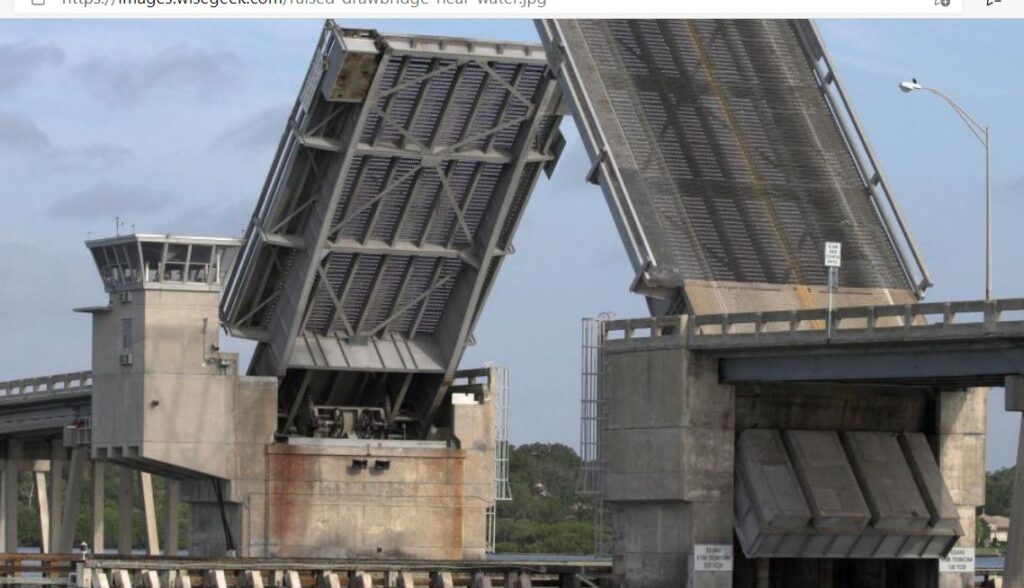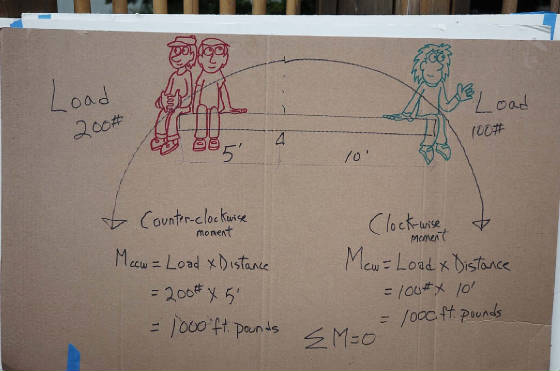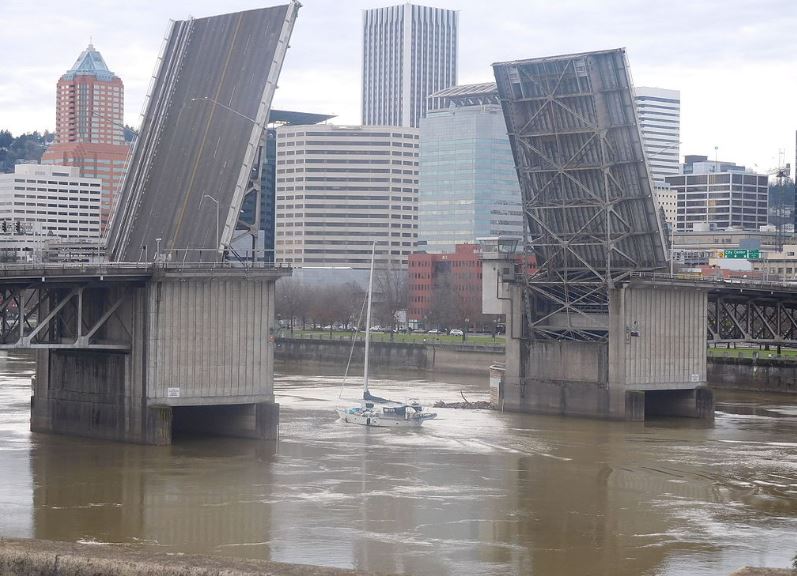BASCULE BRIDGES
Lift bridges, and draw bridges are just other names for bascule bridges.
Bascule means see-saw in French.


The green kid represents the deck of the bridge and the 2 red kids are the counter=weight. They’re heavier and closer to the pivot point. They don’t have to be as long as the deck section since they’re heavier. Same thing with the bridge above.
Some bascule bridges have the counter-weight above the deck.

Here’s a bascule bridge I built years ago. The farther away the ctwt. (brick) is from the pivot, the greater the torque.

Here’s the 3rd St bridge in San Francisco, with the concrete ctwt. attached to the end of the truss hanging above the roadway.

Those 2 enormous concrete weights starred in the Bond movie ” A view to a kill”. . When they pivoted down, they crushed a couple of police cars.

This is the Morrison Bridge in Portland Oregon. This is a true bascule- the deck and the ctwt. are both in a straight line- just like the see-saw above.
There’s a pair of 50 hp motors to get everything moving. That’s all it takes, since the deck and ctwt. are well balanced.
Here’s the bascule I use in the classroom.
You won’t find any bascule bridges that work like this. The falling ctwt. is hooked to the end of the deck- and as this weight descends, it pulls up on the line, bringing the deck along. But what’s the reason for having these 3 falling weights decrease–first the bottom bar hits the ground and thus no longer pulls on the deck, then the next…
First we had to compute the torque needed to raise the deck from the horizontal position.
Next we had to find the torque needed to raise the deck when the line was at a 30 degree angle.
As the deck rises, and the angle decreases, so does the distance from the CG of the deck to the pivot- which decreases the torque needed to raise the deck and therefore the amount of ctwt. that’s pulling on the line.